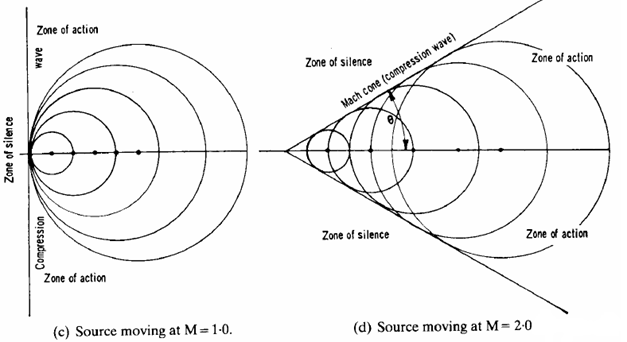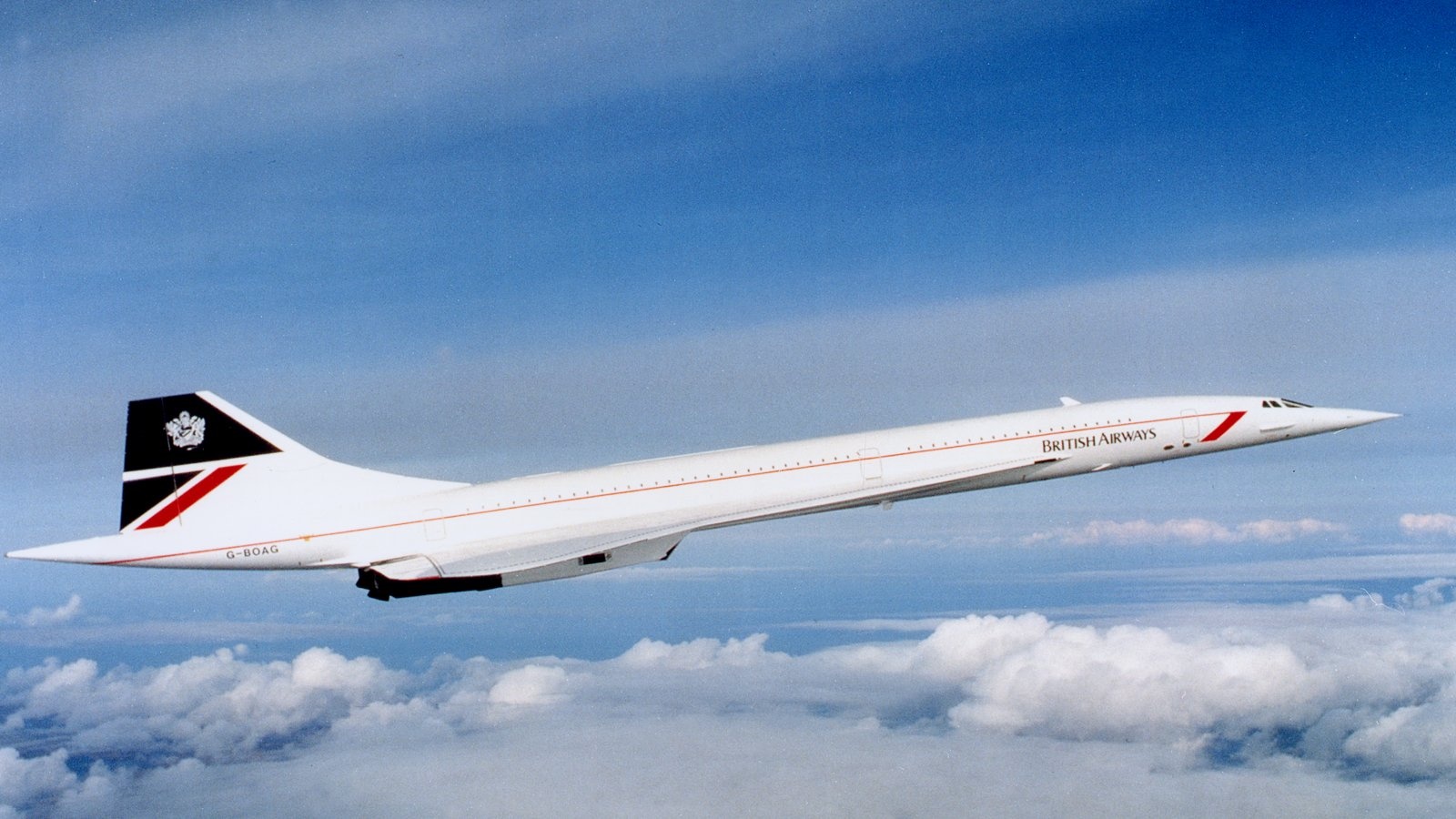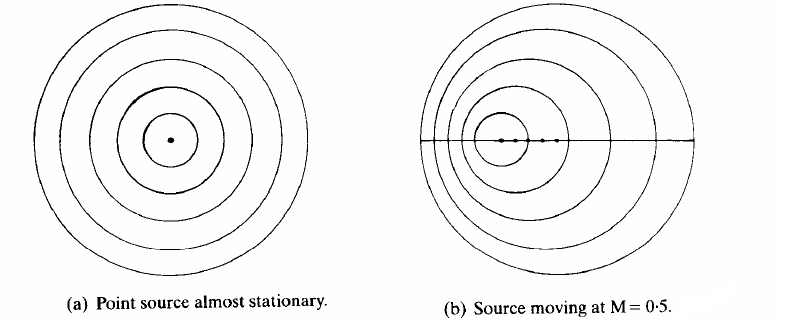Leeham News and Analysis
There's more to real news than a news release.
Bjorn’s Corner: Aircraft drag reduction, Part 14
January 26, 2018, ©. Leeham Co: In the last Corner, we discussed Induced drag after having covered Friction drag and Form drag. These are the main drag components of a subsonic aircraft.
As the aircraft flies over Mach 0.5, an additional drag is added, this time based on the air’s compressibility, transonic or supersonic drag.
Supersonic drag
Before we can talk about supersonic or transonic drag, we must understand what happens during supersonic flight. The very short version is, the aerodynamics goes from smooth and gradual air movements to violent air movements with razor-thin shock areas forming the boundary of the supersonic flow areas.
In Figure 2 a point object is moving slowly and then moving at M0.5.
As the object is moving at M0.5, which at sea level is at 172m/s, the pressure wave warning the air molecules there is an object coming, is not as far ahead as before. The pressure waves spreading out from the object are propagating at 343m/s (the speed of sound) and the object is now travelling at 172m/s. The object is catching up with its own pressure wave.
As the object speeds up to 343m/s or M1.0, it is moving as fast as the waves leaving it, Figure 3. Now the air molecules are hit by the object without any pre-warning. The air molecules are pushed aside by the object’s nose.

Figure 3. A point object travelling through air at M1.0 and M2.0. Source: Stinton. The Anatomy of the Airplane.
After the object has passed, the disturbance is propagated as a pressure wave at the speed of sound in all directions. The pressure waves and the object’s historical centers for these waves are visible as points in the left part for the M1.0 case.
At the front of the object, the waves bunch up into a razor-thin area (0.0002mm) where the air molecules go through a pressure shock. The air is compressed by the object forcing its way forward.
When the object travels faster, the pressure waves from the historical positions of the object can no longer keep up with the object. The bunching up of waves from different historical locations are now spread along a cone trailing the object, the so-called Mach cone.
Before the supersonic shock wave or cone, there is silence. As you see a supersonic aircraft coming towards you, you hear nothing, until you have come into the bow wave. Then you experience the shock of a tremendous pressure difference in a razor-thin zone and then the aircraft’s noise sources, delayed.
I once experienced a colleague passing the sound barrier with his Draken jet at low level a few hundred meters away (by accident of course). There wasn’t a window left in the vicinity, what a pressure shock wave!
Transonic flow
Transonic flow on an aircraft is nothing but a mix of subsonic flow, which follows the “soft” aero laws discussed before and supersonic flow which follows the “violent” aero laws above.
Regions of supersonic flow on aircraft are common when flight speeds reach M07 to M0.8 or more. They appear where the air is accelerated over the aircraft’s speed through the air, such as the top side of wings, Figure 4.
As the air is curving and speeding up over the top leading edge it reaches supersonic speed before the wing’s crest. The passing of the air through to supersonic flow is happening over a convex shaped surface. This introduces a supersonic phenomenon called expansion waves, where the flow’s speed increases and the pressure decreases.
As the air passes the crest it expands, the pressure drops further and the air passes into a subsonic flow through a normal shock. Here, the pressure increases and the air gradually expands to ambient air pressure behind the wing.
Wave drag
In addition to the previous drag forms, we now have at least one additional drag, the supersonic or Wave drag. How this is formed and how it affects the aircraft we will cover in the next Corner.






Dear Bjorn,
figures 2 and 3 are about moving sound sources and not about particles.
As a former fighter pilot you may have noticed that jet engines are loud as hell. Imagine the noise energy of a subsonic flyby concentrated in one impuls – boom.
Therefore I am not sure if modifying the shock waves of super sonic aircraft will reduce much the noise boom. The boom consists of the shock wave produced by the aircraft slicing through air and noise produced by the engine.
Thanks MHalBlaub,
Stinton’s book (worth reading BTW) talks about the source as the nose of e.g. a bullet or leading edge. I changed it to an object or particle. This is why his images are talking about a source, but it’s not a sound emitter, it’s a fixed pointy object moving.
I made the mistake of modifying to a standstill object in the first figure, then it must be a sound source (a standing still object creates no pressure waves). Corrected.
Speaking of corrections, figure 5 says “schock”.
Thanks Peter, fixed.
Moving sound source and physical particle can be used interchangeably in this case, so Bjorn is not wrong. After all, sound waves in air are pressure disturbances propagating outward from where they were created. What created the disturbances in the first place? A source which will have to be some kind of physical moving boundary. There aren’t many other ways of generating sound waves in air.
Any object moving in air, no mater how slowly, will create pressure disturbances even if they are very small. These disturbances always propagate out as sound waves.